
What challenges should designers face now, as found at the GOOD DESIGN AWARDs.
FOCUSED ISSUES is a GOOD DESIGN AWARD initiative that depicts the future of design in society through the screening process.

2023 FOCUSED ISSUES
Considering “Brave Attitude, Organic Design”
Economic rationality, public benefit, eco-friendliness, all-in-one business model──Kuradashi: Kohei Kawamura x Aki Hayashi
2024.03.29
Aki Hayashi, a researcher for the 2023 Focused Issues, picked GOOD DESIGN GOLD AWARD winner Social Good Market Kuradashi as an interesting example of good design that benefits society, the company, and individuals all at once. How did their business model come up? Hayashi interviewed Kohei Kawamura, the CEO of KURADASHI, about the background of Kuradashi’s almighty business model, which simultaneously achieves economic rationality, public benefit, and eco-friendliness.
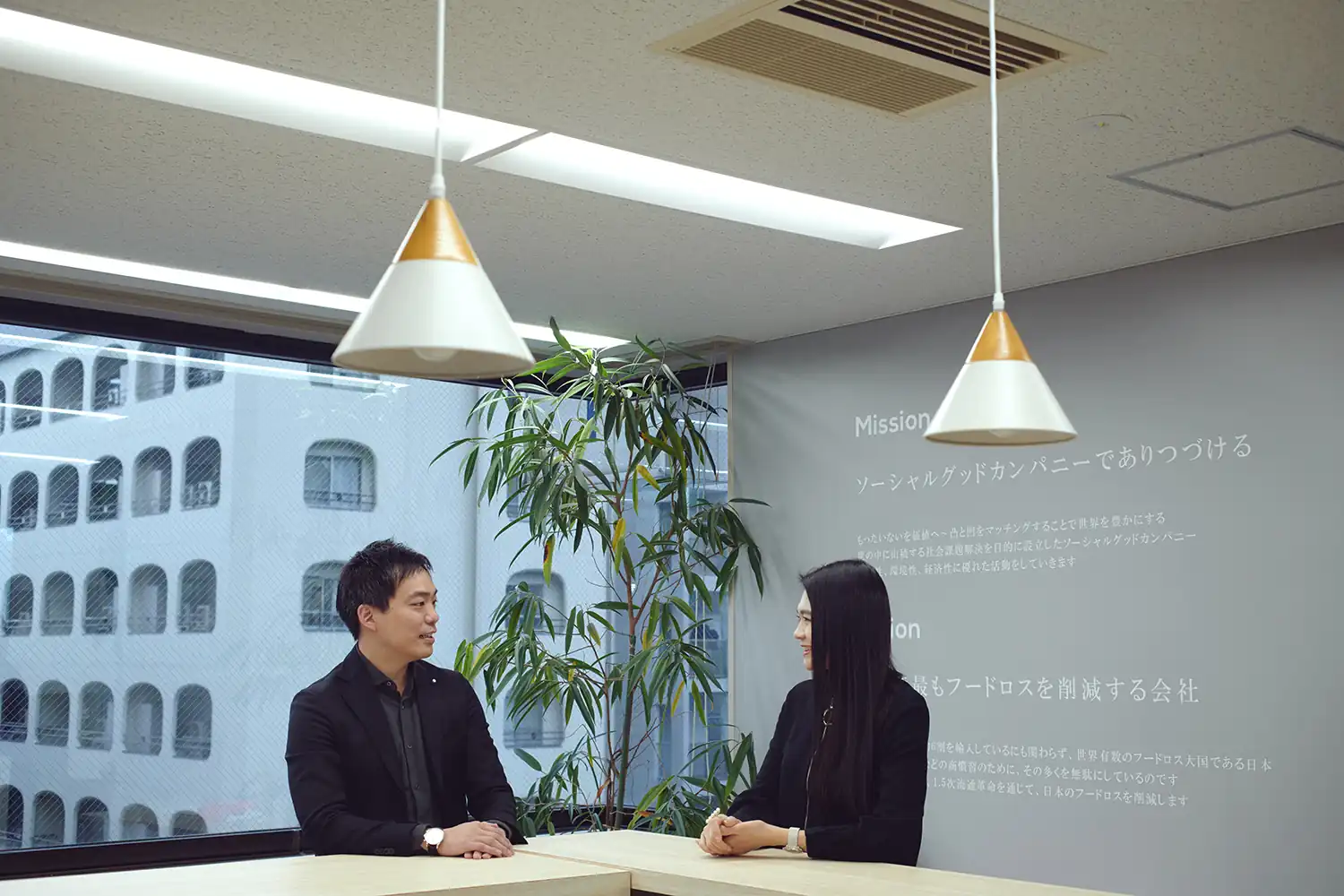
In 2023, Focused Issues, an initiative to redefine the issues that design should face today and make recommendations, was upgraded. Under a renewed vision of a “think tank of design,” we analyze the trends behind award-winning works and identify common themes to show society a direction to head for.
The theme of FY2023 is “Brave Attitude, Organic Design.” Aki Hayashi, the executive chief editor of AlphaDrive, former chief editor of Forbes JAPAN Web and Focused Issues researcher, picked GOOD DESIGN GOLD AWARD winner Social Good Market Kuradashi as an interesting example of good design that benefits society, the company, and individuals all at once.

Social Good Market Kuradashi As a social good market for everyone’s benefit by fun shopping, Kuradashi sells foods that are still good enough to eat but are possibly discarded at reasonable prices aiming to reduce food loss and waste. Moreover, Kuradashi donates and contributes part of the profit to various NPOs working on environmental protection and disaster relief as well as to Kuradashi Fund to support the SDGs 17 goals in a cross-target manner. Enjoyable shopping leading to social benefit. We create such a whole new social good market.
KURADASHI Co., Ltd., which operates Kuradashi, obtained B Corp certification in June 2022. Afterwards, the company made an initial public offering (IPO) on June 30, 2023. Allocating part of its sales to social contributions such as environmental protection, Kuradashi works as a socially good business implementing a harvesting support by students who are interested in food loss and waste issues and local revitalization, and supporting local interactions. At the same time, the company has succeeded as a start-up business. How did their business model come up?
Hayashi interviewed Kohei Kawamura, the CEO of KURADASHI, about the background of Kuradashi’s almighty business model, which simultaneously achieves economic rationality, public benefit, and eco-friendliness.
Business model linking business profit, food loss and waste reduction, and donation
Hayashi Congratulations on winning a GOOD DESIGN GOLD AWARD. Kuradashi reduces food loss and waste by selling foods that are to be discarded for different reasons at reasonable prices and uses part of the profit for social contribution activities and donations. What do you think about your achievement?
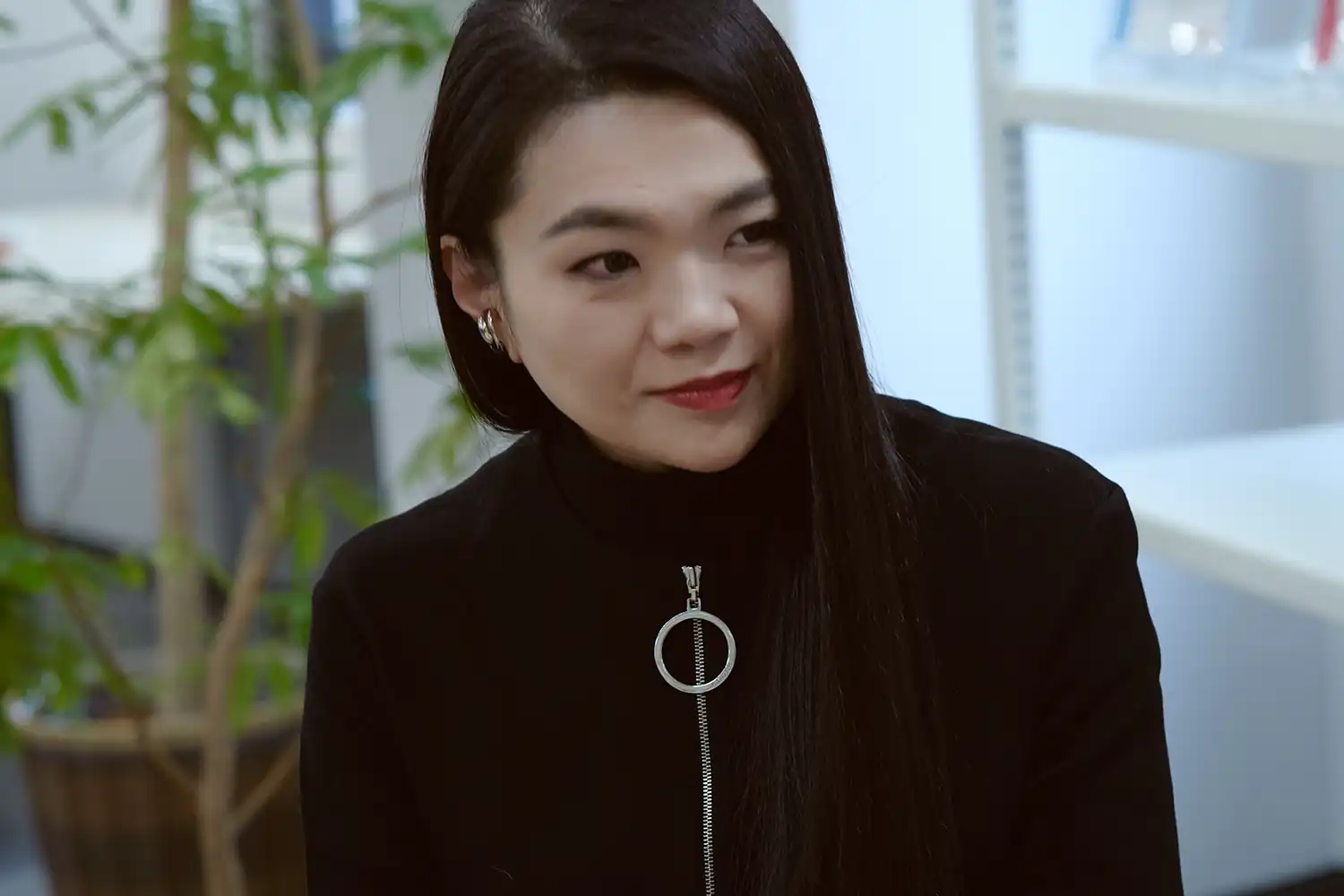
Kawamura I was pleased, as I wasn’t expecting the award. The comment at the screening, “it's hard to find such a good leading edge business model,” encouraged us.
Actually, our company KURADASHI made an IPO just before the second screening began. As the number of institutional investors and other stakeholders increased, we sometimes received comments such as “is it possible to achieve both public benefit and economic efficiency without leaning on the pursuit of economic interests?” After receiving the award, I realized that I should continue to pursue what I want to do with confidence.
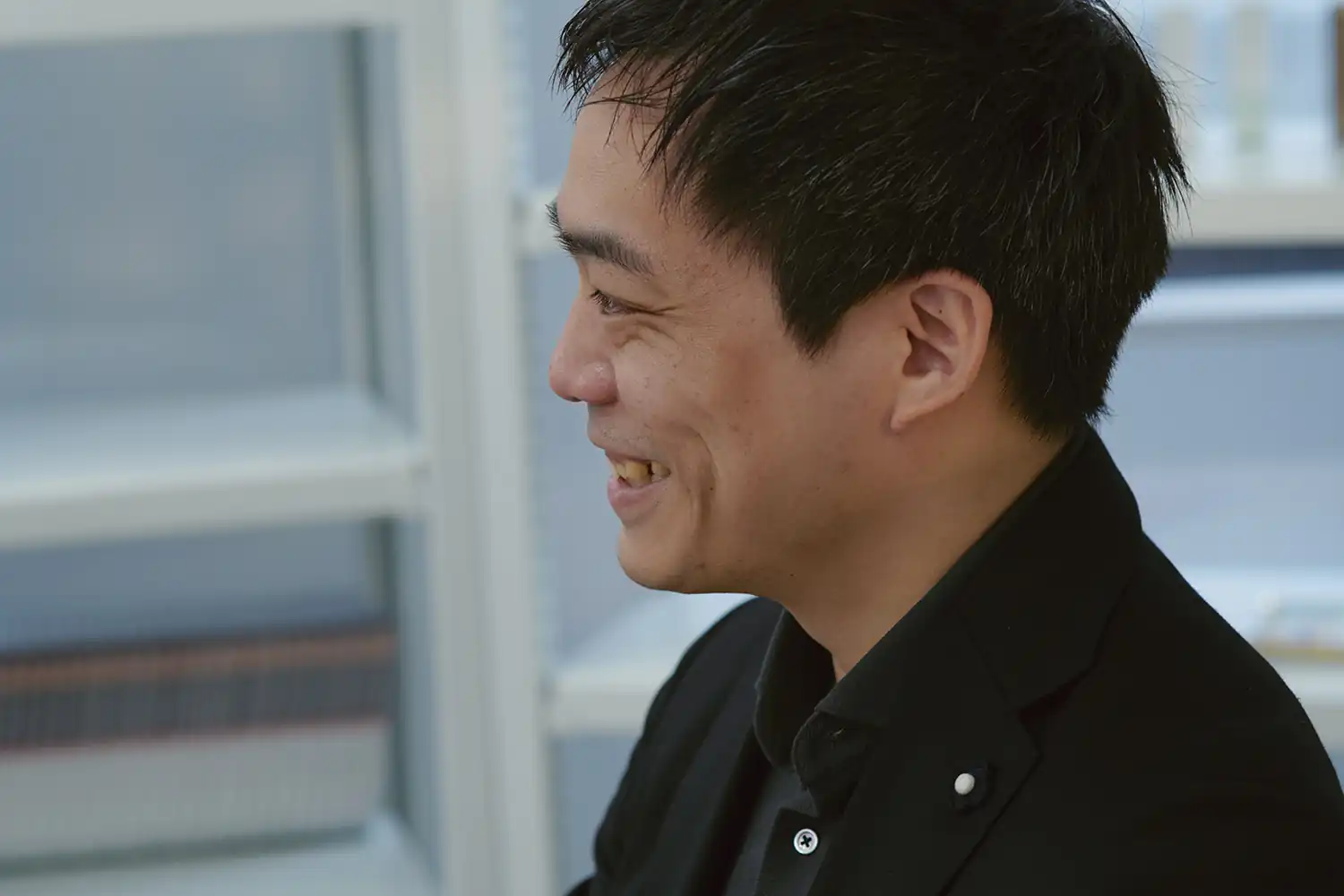
Hayashi That's great timing. Are there any other companies with a business model similar to Kuradashi’s?
Kawamura The number of such companies is increasing in Europe and the United States, where consciousness of the environment is high. I think this is a good trend. There is an app called “Too Good To Go,” which matches unsold items and restaurants in Europe. I have heard that unicorn companies with similar business models were started up in the United States as well.
A business that accommodates individual purposes
Hayashi How did employees of your company react to the news?
Kawamura Many of them were pleased that the business model design of Kuradashi had been highly evaluated.
We set our mission as “Always be a social good company” and our vision as “A company that reduces food loss and waste the most in Japan.” Many employees of our company agree with these policies and joined us. I believe that receiving the award explicitly measured our achievement and greatly encouraged our employees.

In addition to the GOOD DESIGN AWARD, our business is drawing more and more recognition from various certifying bodies such as B Corp, the Environment Minister’s Award, and the Minister of Agriculture, Forestry and Fisheries Award. By receiving these awards, our employees became more confident that the business they were working on excellently accommodates social benefit, eco-friendliness, and economical efficiency.
Hayashi In recent years, both the company’s purpose and employees’ purpose are treated as significantly important in corporate management. It is important that employees recognize social meaning in their work.
Focus on food loss and waste issues before SDGs
Hayashi How was Kuradashi launched to begin with?
Kawamura Tatsuya Sekito, the CEO, founded Kuradashi by himself in 2014 and launched the service in February 2015. Even though the word “SDGs” was not coined back then, Sekito had been already thinking that food loss and waste would definitely be a big social problem one day. Our business model hasn’t changed since the start.
Furthermore, based on his experience in the Great Hanshin-Awaji Earthquake, Sekito thought, “There is a limit to what a single person can do for society. Systematization is important in order to resolve social issues continuously.” Against this background, a model to solve the current food loss and waste problem was born.
Hayashi I see. How did you come to join the company?
Kawamura I met Sekito for the first time in China when I was working for a trading company of my employer before the last. A few years later, Sekito told me his plan about Kuradashi’s service when we reunited for the first time in a while. I thought, “This is an extraordinary model at the cutting edge of the times.” Back then, I had been thinking, “There must be a sustainable form that takes into consideration society, stakeholders, and the environment” while working with a focus on putting sales and profit at the forefront of capitalism.
Kuradashi’s business model, in which the pursuit of profit and social contribution become a “trade-on” rather than a trade-off, is truly a new form of capitalism, and we hit it off with Sekito. I decided to join the company because I wanted to expand the scope of influence of this model.
Hayashi However, it isn’t easy to aim to “go public” with a new-capitalism business model in a conventional capitalist world. You could have shifted to other businesses that are more profitable than the current one.
Kawamura Of course, we could have pursued short-term profits but we firmly held on to our long-established mission of “Always be a social good company” in the end.
Despite various tough challenges, we were able to carry on with our business because we were proud of the business model of Kuradashi, which enhances the value of unsold products and resells them, believing that this service was needed in this day and age. We were able to list stocks because all of us believed that maximization of long-term profits could be achieved by encompassing economic rationality, public benefit, and eco-friendliness all together.
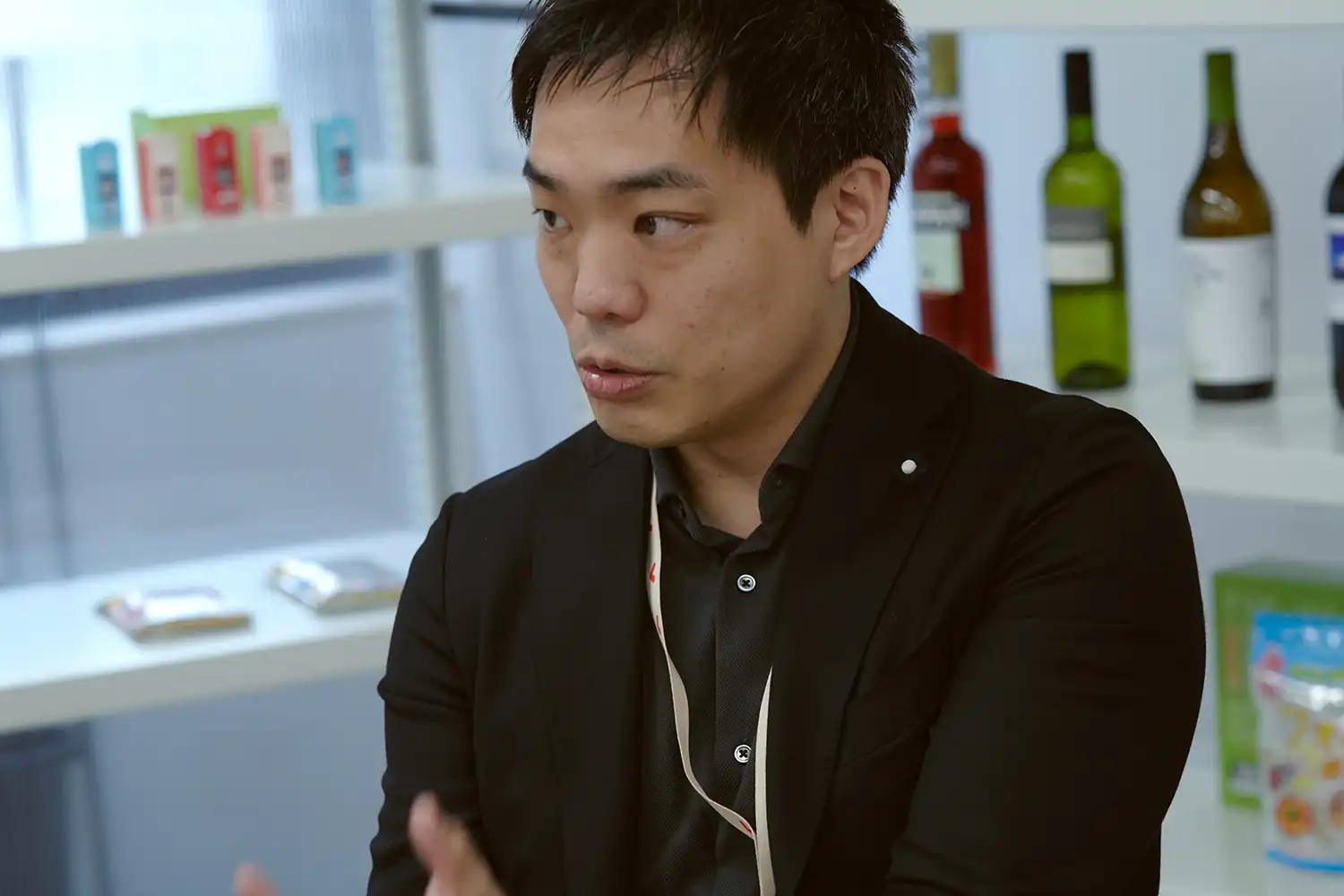
Hayashi You said that Kuradashi’s business model started before the term “SDGs” was coined. Was there a moment you realized the change of trend?
Kawamura In 2014, even the term “food loss and waste” wasn’t common. But the trend changed in October 2019 when the Act on Promotion of Food Loss and Waste Reduction was passed, which made it mandatory for the national government to act as a law. In addition, as the term “SDGs” began to spread in society, restaurants and eateries became aware of food loss and waste reduction. At the same time, an increase in use of e-commerce increased the number of users during the COVID-19 pandemic.
Hayashi I have been feeling that consumers are becoming more and more aware of sustainability in recent years. What opinions have you had from Kuradashi users? I also would like you to tell us about recent trends.
Kawamura An increasing number of users agree with our policy of food loss and waste reduction and join Kuradashi. Not a few users have responded and commented to our survey, stating such things as “I support your business” and “I appreciate your efforts to reduce food loss and waste.”
Along with that, the number of members increased from about 60,000 to 70,000 in 2019, and to over 510,000 at present. More than 80% of our users are repeat users. In addition, we have 1,600 supporting companies that provide us with products.
Hayashi The number of supporters is increasing steadily.
Kawamura Immediately after its release in 2015, our service was mainly used by environmentally conscious people. In the past few years, we have been running marketing measures to conduct the IPO to promote our business to the public. The increase in members may be a result of these marketing activities.
We want to be a safety net for society
Hayashi The recognition of this type of business model well symbolizes the state of the current era. Other than the business model, were there any design-related points that you paid special attention to?
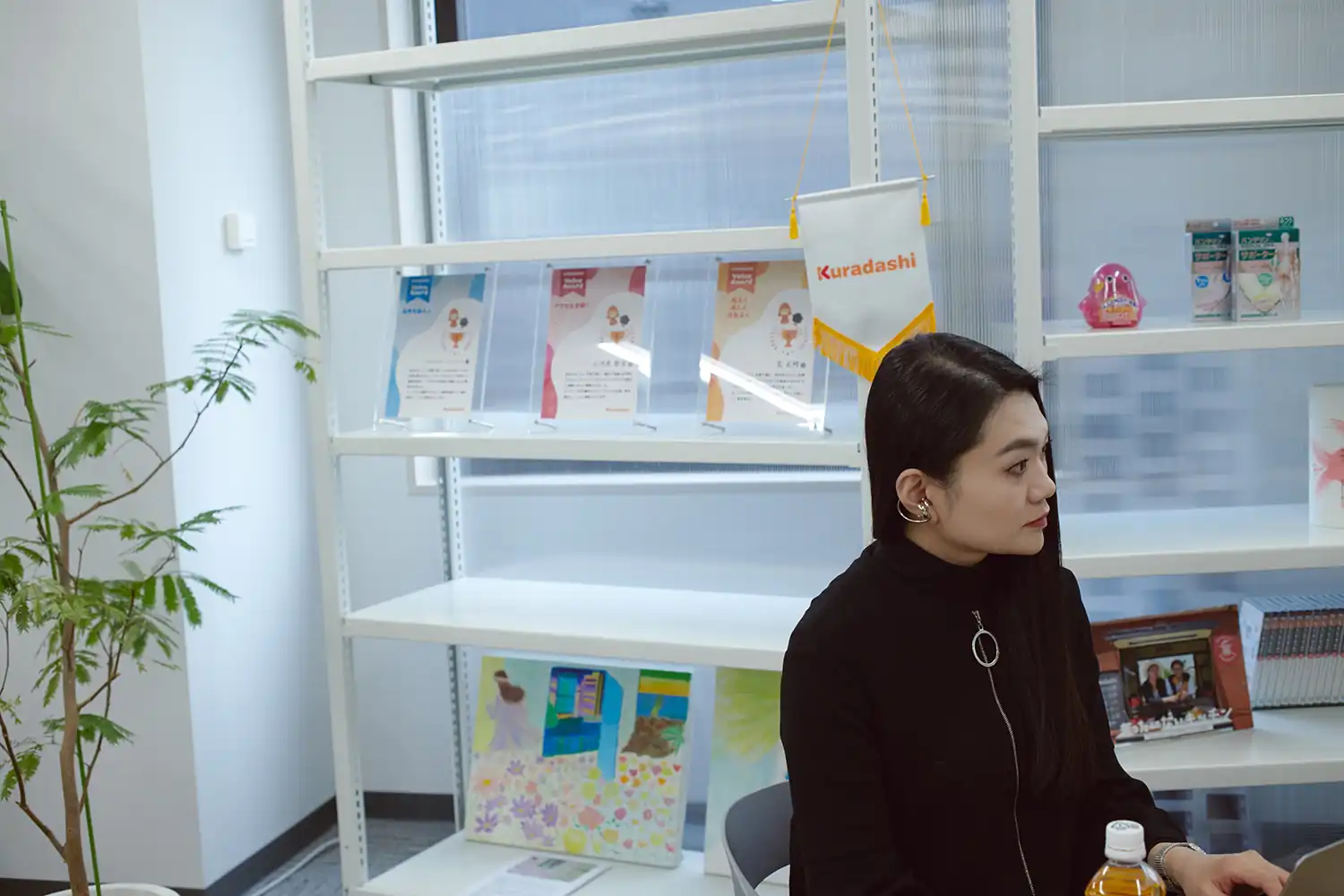
Kawamura I would say it is that we value the viewpoints of both manufacturers and users. Originally, Kuradashi was established with a manufacturer-first concept. Products are treated by manufacturers as “our children.” We treat and re-distribute the products with respect. For this reason, we designed the brand with a great focus on the perspective of manufacturers immediately after the brand’s release.
In July 2022, we renewed the brand following the increasing interest of our users in sustainability. In consideration of user’s point of view, in order to create a friendly impression, we selected a soft-looking orange-colored logo and adopted warm, appetizing colors for our website.
Hayashi I see. You started with a manufacturer-first policy, and later on, started to pay attention to users’ perspectives.
Kawamura That’s right. And the background of our e-commerce business is manufacturing processes and logistics system of manufacturers, for example. We aim to provide a system that can solve issues in such a wider value chain, and in the end, we cover the entire infrastructure related to food loss and waste reduction.
Hayashi Does that mean Kuradashi aims to influence the further upstream of the value chain?
Kawamura That’s right. For example, we are thinking about starting a rental warehouse business. Under current logistics, products manufactured by makers are placed in manufacturers’ warehouses before being delivered to consumers. Kuradashi buys food that is possibly to be discarded from manufacturers and transports it to our warehouse.
However, if we rent space in our warehouse to manufacturers, we don’t need to transport products from their sites because they are already in our warehouse. Furthermore, by intervening in distribution and collecting data, we can improve the accuracy of demand forecasts, and eventually eliminate food loss and waste itself.
Hayashi That’s a great vision. I am looking forward to the future even more.
Kawamura On the other hand, some people say, “Your business can’t go on without food loss and waste.”
If a world without food loss and waste came to be realized, that would mean our ultimate goal has been achieved. However, I doubt that we will ever be able to eliminate food loss and waste completely, and therefore, in case of food loss and waste, we would like Kuradashi to exist as a safety net.
To create a huge groundswell in society.
Hayashi I can see that your company works on a wide range of challenges. Kuradashi doesn’t complete its business on its own. Many other companies are involved, creating a huge groundswell in society. To conclude this interview, please tell us what we should do to make this type of business successful.
Kawamura Firstly, manufacturers are aware that they must reduce food loss and waste. However, many of them are still trapped in a long-established business practice of discarding products and idea of “better to discard.” As a result, the amount of greenhouse gases emitted from food loss and waste is equal to that from automobiles.
Hayashi Kuradashi is greatly involved in the recent zero carbon movement.
Kawamura Exactly. In order to show their commitment to zero carbon, food manufacturers often mention food loss and waste reduction in their consolidated reports. However, not many of them mention what measures they actually take.
By using Kuradashi, they can show the results of their efforts numerically. We hope they use our service to draw people’s interest in food loss and waste to a large, continuous movement instead of letting it go as a passing trend.
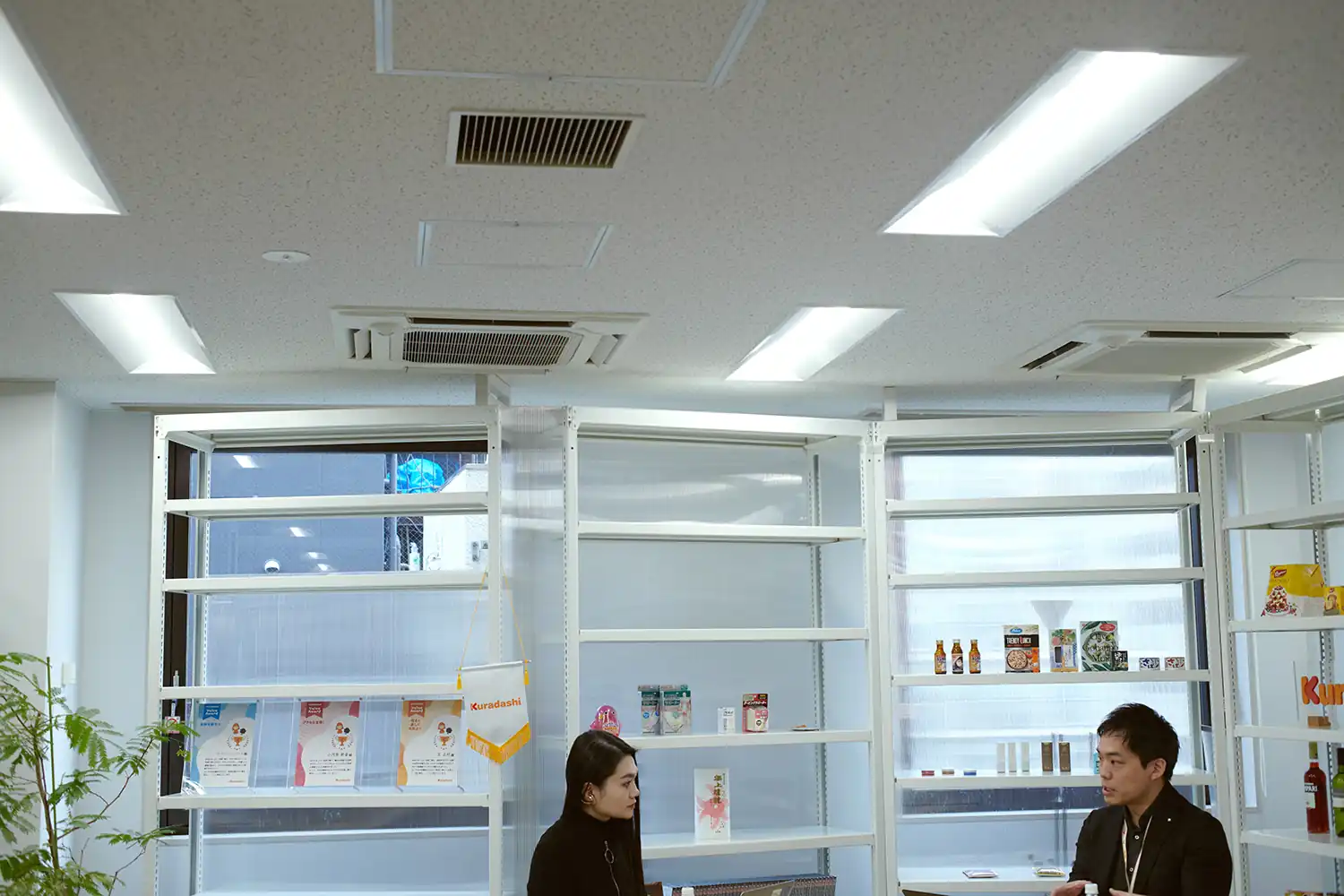
Hayashi In order to change fixed ideas in society, we need to cooperate with the government and administration to send a strong message.
Kawamura Exactly. The Ministry of Agriculture, Forestry and Fisheries, the Consumer Affairs Agency, and the Ministry of the Environment are actively working to reduce food loss and waste. I believe we must cooperate with them. However, government measures often take long to spread among consumers. I believe private services like Kuradashi can fill this time gap between authorities and consumers.
Hayashi I hope that this award for Kuradashi will encourage companies in various domains and make them think, “Let’s change our business model to one like Kuradashi.” I think your company receiving the award caused a stir in the business world.
Kawamura The GOOD DESIGN AWARD is an absolutely well-known award. We are greatly honored that such a prestigious body recognized our business model rather than products. I hope our service will be further recognized in the public in the future. With the acquisition of B Corp, the IPO, and the winning of the GOOD DESIGN AWARD attracting a lot of attention, we would like to create a great groundswell in society by cooperating with stakeholders such as local governments and companies.
Rika Namiki
Writer
Born in Chiba Prefecture in 2001. Her interests are folk art, anarchism, and feminism. Graduated from College of Tourism, Rikkyo University. She plans to start graduate school at a university in 2025. Her favorite flower is tulip.
Shunsuke Imai
Photographer
He was born in Minamiuonuma City, Niigata in 1993. He became independent after working for amana Inc.
Tetsuhiro Ishida
Editor
Born in Hokkaido in 1992. Graduated from International Christian University (ICU). After working on development of agricultural and architectural startups, he became an editor. He runs De-Silo, an organization that supports researchers in the humanities and social sciences. Focusing on domains such as design, sustainability, and deep tech, he mainly interviews researchers.


